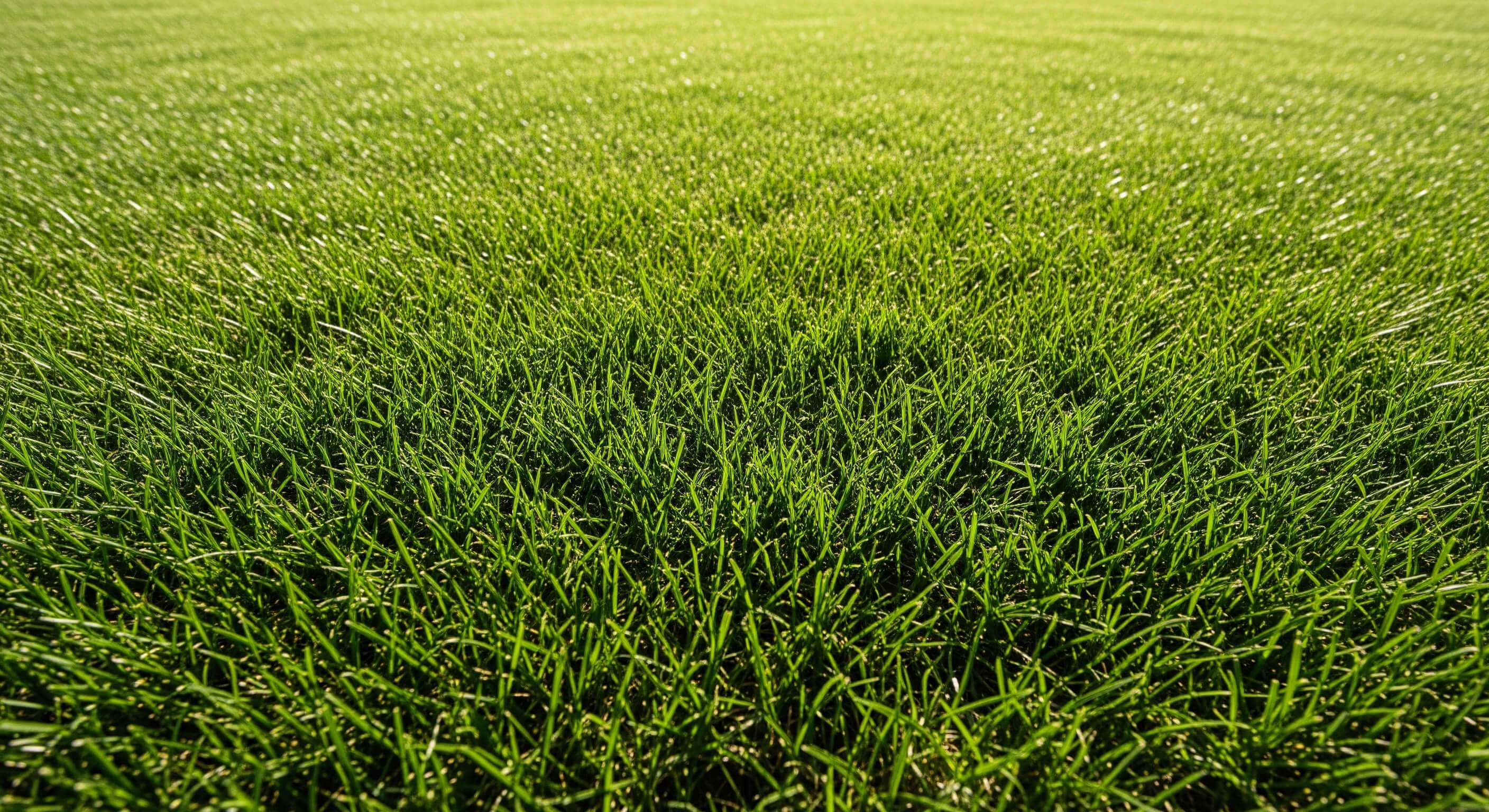
Bermuda Grass
More sun-loving but less shade tolerant
Stenotaphrum secundatum
If you're dealing with shady areas where other grasses struggle, St. Augustine might be your answer. This hardy warm-season grass has gained a reputation as the top choice for homeowners in coastal and southern regions who want a thick, carpet-like lawn without the high upkeep of other types.
What makes St. Augustine unique is its incredible ability to thrive where others struggle. Those partially shaded spots under trees? St. Augustine handles them effortlessly. Salt spray from the nearby ocean? No problem. This grass withstands conditions that would stress out Bermuda or Centipede grass.
You'll recognize St. Augustine by its broad, flat blades that feel coarse to the touch. These blades usually measure 8-9mm wide, making them noticeably wider than most other lawn grasses. The color varies from medium to dark green with a slight blue tint, especially in healthy, well-fed lawns.
St. Augustine spreads through above-ground runners called stolons. These thick, fleshy stems creep along the soil surface, rooting at the nodes to form new plants. Unlike Bermuda grass, which also uses underground rhizomes, St. Augustine depends entirely on these visible runners, making it easier to control but slower to recover from damage.
Run your hand across a St. Augustine lawn and you'll immediately notice its coarse texture. This isn't the soft, fine-bladed grass you'd want for a golf green, but rather a tough, resilient turf that can handle moderate foot traffic while keeping its lush appearance.
St. Augustine thrives in USDA zones 8b through 11, preferring temperatures between 70-90°F. It goes dormant when temperatures drop below 55°F, turning a tan or brown color. In areas with mild winters, it may keep some green color year-round.
Here's where St. Augustine really stands out - it only needs 4-6 hours of direct sunlight each day, compared to 8+ hours for Bermuda grass. Its shade tolerance makes it perfect for yards with mature trees or buildings that cast shadows.
St. Augustine adapts easily to different soils. It grows well in sandy, clay, or loamy soils with pH levels from 5.0 to 8.5. Its salt tolerance also makes it ideal for coastal areas where ocean spray is common.
Keep your mower high - St. Augustine prefers to be cut at 2.5 to 4 inches. Cutting too short stresses the grass and invites weeds. During peak growing season, you'll likely mow weekly. The "1/3 rule" applies here: never remove more than one-third of the blade height in a single mowing.
St. Augustine grass needs about 1 inch of water per week during the growing season. It quickly shows drought stress with blades folding and turning grayish. However, it recovers rapidly once watering resumes. Deep, infrequent watering promotes deeper roots compared to daily light sprinkles.
This grass is a heavy feeder, needing 3-6 pounds of nitrogen per 1,000 square feet each year. Split applications work best: early spring (after the last frost), late spring, summer, and early fall. Avoid fertilizing late fall, as it can decrease cold hardiness.
These tiny insects are St. Augustine's top enemy. They inject toxins while feeding, creating yellow patches that turn brown and die. Check the hottest, sunniest areas of your lawn first. Early detection is key for control.
Circular brown patches appear during cool, wet weather. The grass blades pull easily from the stolons when infected. Good drainage and avoiding watering in the evening help prevent this fungal disease.
This disease causes irregular yellow patches that thin out over time. It's most common in alkaline soils and areas with poor drainage. Improving soil conditions and using proper fertilization help manage this problem.
The most popular variety, known for chinch bug resistance and quick growth. However, it has poor cold and shade tolerance compared to other varieties.
Offers better cold and shade tolerance than Floratam with a finer texture. It's growing in popularity in transitional zones.
The most cold-tolerant variety, suitable for areas where winter temperatures occasionally drop below freezing. It has good shade tolerance but is susceptible to chinch bugs.